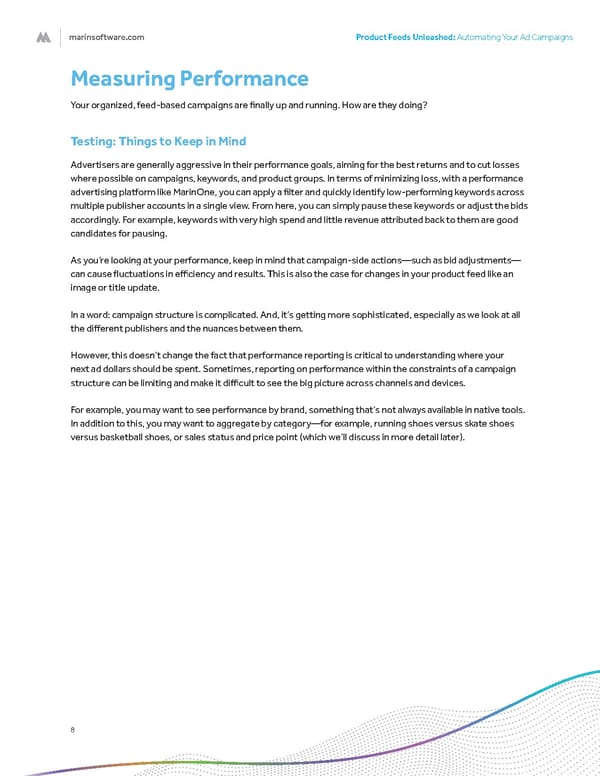marinsoftware.com Product Feeds Unleashed: Automating Your Ad Campaigns 8 Measuring Performance Your organized, feed-based campaigns are finally up and running. How are they doing? Testing: Things to Keep in Mind Advertisers are generally aggressive in their performance goals, aiming for the best returns and to cut losses where possible on campaigns, keywords, and product groups. In terms of minimizing loss, with a performance advertising platform like MarinOne, you can apply a filter and quickly identify low-performing keywords across multiple publisher accounts in a single view. From here, you can simply pause these keywords or adjust the bids accordingly. For example, keywords with very high spend and little revenue attributed back to them are good candidates for pausing. As you’re looking at your performance, keep in mind that campaign-side actions—such as bid adjustments— can cause fluctuations in efficiency and results. This is also the case for changes in your product feed like an image or title update. In a word: campaign structure is complicated. And, it’s getting more sophisticated, especially as we look at all the different publishers and the nuances between them. However, this doesn’t change the fact that performance reporting is critical to understanding where your next ad dollars should be spent. Sometimes, reporting on performance within the constraints of a campaign structure can be limiting and make it difficult to see the big picture across channels and devices. For example, you may want to see performance by brand, something that’s not always available in native tools. In addition to this, you may want to aggregate by category—for example, running shoes versus skate shoes versus basketball shoes, or sales status and price point (which we’ll discuss in more detail later).
 Feed Optimization Whitepaper Page 7 Page 9
Feed Optimization Whitepaper Page 7 Page 9